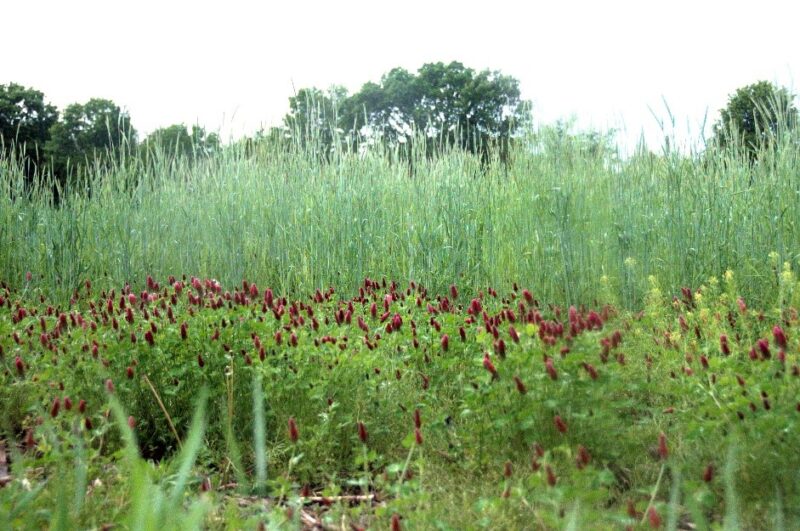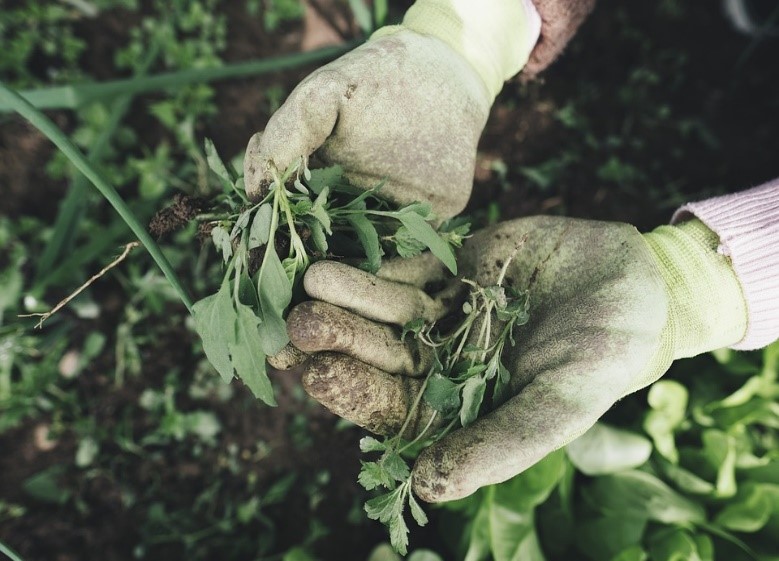We’ve all probably heard the old fact that cover crops result in colder, wetter soils. It seems this myth has been around amazingly longer than cover crops themselves. It is likely an extension of another long-held “truism” that no till (see also: zero till, direct seeding, never till) results in colder and wetter soils. Ask just about any farmer, or at least those who till, and they will recite that truism like it was Gospel. To be fair, there is some older scientific literature suggesting cover crops reduce soil temperature.[1]
Being relatively new to no till and cover crops, I have the advantage of not holding onto prior assumptions.
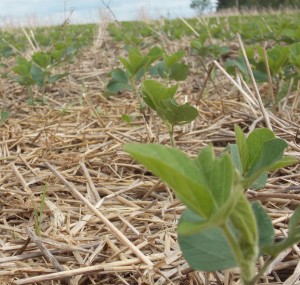
And, being human, I tend to put more credibility in conclusions from those who speak with experience. Too often the only ones saying that no till and covers make soil wet and cold are the people who have never tried either.
To get to the bottom of this I began taking soil temperature readings starting in April. Using a protocol established by Dave Robison and Dan Perkins (Jasper County, IN SWCD, Youtube 2014 cover crops videos) every week I took soil temperature readings at random locations at 4 inch depth in my no till field with a winter-killed cover (radish), my neighbor’s fall tilled field across the fence row, and my lawn to provide a baseline. Here is a table with the results through early July.
| Week | Date/Time | Lawn ( average temp in ⁰F from 4 samples) | No till with winter-killed cover crop | Fall tilled |
| 1 | April 22 @ 11:15am | 42.85 | 44.45 | 45.75 |
| 2 | May 2 @ 7:30am | 41.98 | 41.4 | 40.93 |
| 3 | May 6 @ 8:50am | 45.13 | 44.88 | 43.43 |
| 4 | May 13 @ 8:35am | 54.2 | 53.68 | 53.07 |
| 4b | May 13 @ 7:10pm | 53.03 | 52.96 | 52.63 |
| 5 | May 19 @ 10:50am | 51.83 | 52.58 | 52.45 |
| 6 | May 26 @ 11:40am | 61.97 | 68.45 | 69.17 |
| 7 | June 2 @ 3:30pm | 71.02 | 70.72 | 70.52 |
| 8 | June 9 @ 5:01pm | 70.52 | 70.32 | 73.15 |
| 9 | June 16 @ 7:50am | 60.07 | 58.42 | 57.8 |
| 10 | June 23 @ 11:30am | 69.27 | 68.77 | 68.5 |
| 11 | July 1 @ 9:00am | 66.27 | 64.15 | 64.25 |
| Average through mid-July | 59.46 | 59.41 | 58.67 |
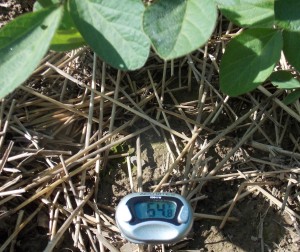
As you see from the data, there is little scientific basis for the myth of colder, wetter soils in no till and/or cover crops. You may also note that, in fact, the data indicates more times in which the no till/cover cropped soils had higher temperatures. And it wasn’t, as I initially thought, a sampling error by sampling only in the morning or afternoon. Regardless of time of day, no till with covers enjoyed similar or slightly higher soil temperatures. Myth busted. Beyond that simple conclusion though, are a few interesting details to point out. First, tilled soils had a temperature advantage in 3 out of 12 measurements (weeks 1, 6 and 8). Those measurements followed a fresh tillage pass that had not yet received a rain event. As soon as the soils received a rain (which is quite frequent during spring and summer in Wisconsin), the temperature advantage swung back in favor of no till and covers. Second, soil temps from the no till/covers were quite similar to the lawn soil temps. Average temps for lawn and no till/covers came in at 59.46 and 59.41 degrees, respectively, while the tilled field came in .74 degrees cooler at 58.67.
Now, just how do we explain the myth and the reality?
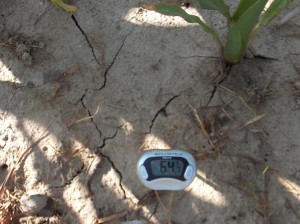
Understanding old ways of viewing soil helps explain the propagation of the myth. Until recently, the overwhelming approach to soil was to recognize only that which we could observe with our own eyes. Thus, most people only recognized the soil surface. Through this perspective, the only way soil dried out or warmed up was through the sun’s radiant energy striking the soil surface. Black soil warmed up faster than light-colored soil. Residue shading the soil would result in less radiant energy hitting the soil. That all makes sense so far. So why didn’t my neighbor’s tilled soil (6 tillage passes) have a soil temperature advantage over my no tilled soil with cover crop residue?
It turns out, the soil surface is only half of the equation (or less). Until now, we have ignored what goes on in the soil; the science we cannot easily observe. In simple terms, scientists are now beginning to account for many other factors such as drainage, structure, and biology. Thanks to no till and cover crop roots, I am slowly breaking through the plow pan located about 16 inches below the surface. That plow pan, intensely present in my neighbor’s soil, prevents excess moisture from draining away. Thus, if one chooses to not address plow pan, one must rely on tillage as a means of aerating the soil. However, repeated tillage breaks down soil structure, further decaying the soil’s ability to move excess water. The end result is not only a tillage treadmill, but that no tilled soils shed excess water much easier, and dry soils warm up much faster and easier than wet soils. Soil biology may also be a factor. With no till and covers, the micro-organisms that normally do not survive tillage and long periods lacking plant roots have a chance to grow. That growing population and the process of digesting and converting minerals and nutrients may actually warm the soil. Note again from the data the fact that the no till and lawn (technically also no till) both typically had higher soil temperatures than the tilled field.
Unfortunately for conservation, water quality, wildlife, and the climate, myths like these have inhibited and delayed adoption of no till and cover crops. But it isn’t just wildlife or water quality that suffers. Misconceptions and assumptions have led farmers to continue soil abuse, costing them time and money now while degrading the long term health and productivity of their soil.
[1] JR Teasdate and CL Mohler, “Light Transmittance, Soil Temperature, and Soil Moisture under Residue of Hairy Vetch and Rye,” Agronomy Journal 85 N. 3 (1993): 673-680, suggest a reduction in daily soil temperature amplitude under cover crops. Craig Drury et al, “Red Clover and Tillage Influence on Soil Temperature, Water Content, and Corn Emergence,” Agronomy Journal 91 N. 1 (1999): 101-108 suggest no till with and without a red clover cover crop increased soil moisture by 2-5% and reduced soil temperatures by 1 to 2 C during early crop emergence in southwestern Ontario.


